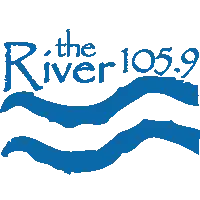WHCN
WHCN (105.9 FM) is a commercial classic hits radio station licensed to serve Hartford, Connecticut.[1] Owned by iHeartMedia, the station serves the Greater Hartford area; the brand is a local reference to the Connecticut River. The WHCN studios are located on Columbus Boulevard in Hartford, while the station transmitter is located at West Peak State Park in nearby Meriden. In addition to a standard analog transmission, WHCN broadcasts over two HD Radio digital subchannels, and is available online via iHeartRadio.
 | |
| City | Hartford, Connecticut |
|---|---|
| Broadcast area | Greater Hartford Springfield, Massachusetts |
| Frequency | 105.9 MHz (HD Radio) |
| Branding | The River 105.9 |
| Slogan | Variety from the 70s, 80s and 90s! Live Mix of EDM Hits (HD2) |
| Programming | |
| Format | Classic hits |
| Subchannels | HD2: Club Jam EDM |
| Ownership | |
| Owner | iHeartMedia (iHM Licenses, LLC) |
| WKSS, WPOP, WUCS, WWYZ | |
| History | |
Call sign meaning | W Hartford Concert Network |
| Technical information | |
| Facility ID | 72144 |
| Class | B |
| ERP | 16,000 watts, directional |
| HAAT | 264 meters (866 ft) |
Transmitter coordinates | 41.563°N 72.845°W |
| Links | |
| Webcast | Listen Live Listen Live (HD2) |
| Website | theriver1059 |
History
Early years
WHCN traces its history back to the earliest days of FM Radio. It was first licensed as experimental station W1XSL in 1936. It originally broadcast in the old FM band between 42 and 50 MHz. It subsequently used the call letters W1XPW, W65H, WDRC-FM (not related to today's WDRC-FM) and WFMQ before arriving at WHCN in 1958 as a classical music outlet. The call letters stood for the "Hartford Concert Network", because the station often aired classical music concerts.
Rock music era
WHCN shifted from classical music to progressive rock in 1969. The format was later flipped to mainstream album rock in late 1976. Known as "106-WHCN", it was very successful in the 1970s and the 1980s. WHCN was home to the morning show "Picozzi and The Horn", up until the mid-1990s. Mike Picozzi would later move to rival rock station WCCC-FM, eventually becoming program director there. WHCN flipped to classic rock in the mid-1990s to compete for the older rock audience that grew up with the station. New owners switched the moniker to "105-9 WHCN," moving to a harder-edged classic rock format billed as "Classic Rock That Really Rocks". WHCN would be snapped up by Liberty Broadcasting, then SFX Broadcasting/Capstar, and then AMFM, which merged with iHeartMedia (then known as Clear Channel Communications) in 2000.
Move to adult hits
After years of declining ratings, the 33-year run of the WHCN brand would come to an abrupt end in March 2002, when WHCN became known as "The River 105.9", retaining most of its on-air staff from its previous Classic Rock incarnation. The station's "The Rock" slogan and later the station's former Asylum Street studios would be adopted by one-time rival WCCC. WHCN's playlist was different and more diverse than other stations in the market, which helped it shoot up in ratings from 13th place to 5th place within a year. "The River 105.9" targets listeners who enjoy both rock and hot adult contemporary formats, by blending classic rock hits of the 1970s and 1980s with current and recent hits. The WHCN call letters have been retained to reflect the station's past.
The station appeals to baby boomers and Generation X listeners with specialty programs such as the "80s at 8", which is an hour of 80s music starting at 8am and 8pm, "The 10 o'clock Artist Spotlight" at 10am, and the "High School Reunion" at 6pm, focusing on a specific year.
Transmitter
WHCN is a Class B FM station,[2] a class allowed to transmit up to 50,000 watts Effective Radiated Power (ERP) at 150 meters Height Above Average Terrain (HAAT). Stations broadcasting at higher elevations transmit at ERPs reduced on a sliding scale that varies with height. WHCN transmits at 264 meters HAAT, with an ERP of 16,000 watts, equivalent to 50,000 watts at 150 meters. (FCC Facility 72144).[3] The facility radiates in a directional pattern, with maximum ERP at 30° azimuth, in the direction of Hartford. The signal is reduced in other directions; its weakest strengths are at 190° and 230° azimuth, toward the southwest. This is to reduce interference with WQXR-FM, a classical music station in New York City that is also on 105.9 MHz.[4] In those directions, the signal is .45 of full power, or 7,200 watts; WQXR operates at reduced power (610 watts at 416 meters) to avoid interfering with WHCN.[5]
HD Programming
- HD1 is a digital simulcast of the analog programming.
- HD2 is a rock format, playing less familiar titles, known as "Deep Tracks".[6] It has since been replaced with Club Jam EDM.
References
External links
- The River 105.9 website
- John Shepard's FM Stations -- America's First FM network. The article contains a long history of WHCN, written by Donna L. Halper
- WHCN in the FCC's FM station database
- WHCN on Radio-Locator
- WHCN in Nielsen Audio's FM station database
